Maximize Your Space with Garden Hanging Bags: The Ultimate Solution for Vertical Gardening at Home and In the Garden
If you’re living in a small home or apartment, garden hanging bags are a great space-saving solution that offers versatility in hanging options indoors, outdoors, balconies and fences. These types of bags also offer easy maintenance and accessibility for watering and tending to plants. There are several types of plants suitable for garden hanging bags such as herbs and small vegetables for culinary use, colorful flowers for decoration, and succulents and trailing plants for added visual interest. To ensure successful vertical gardening with garden hanging bags, proper placement and orientation for sunlight exposure, choosing the right soil and drainage options, as well as regular pruning and maintenance are crucial. You can also get creative by creating a living wall or vertical garden display, incorporating hanging bags into existing outdoor landscaping, or using them for seasonal and holiday decorations.
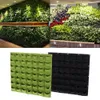

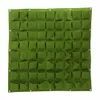
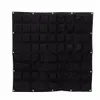
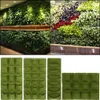
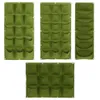
Advantages of Garden Hanging Bags
In today’s fast-paced and urbanized world, the trend of gardening has been on the rise. However, with limited space in small homes and apartments, traditional gardening may seem like a distant dream. This is where garden hanging bags come into play as a game-changer for urban gardeners. These innovative bags offer a space-saving solution and provide a myriad of advantages for those looking to bring greenery into their living spaces.
One of the most significant advantages of garden hanging bags is their ability to save space. In small homes and apartments, finding room for a traditional garden can be challenging. This is where hanging bags shine, as they can be easily hung on walls, balconies, fences, or even indoors. This versatility in hanging options allows urban gardeners to make the most of their available space and bring life to areas that were previously underutilized.
Furthermore, garden hanging bags offer easy maintenance and accessibility for watering and tending to plants. With traditional gardening, the task of watering and tending to plants can be time-consuming and strenuous, especially in urban settings where access to outdoor water sources may be limited. Garden hanging bags solve this problem by providing easy access to plants at an arm’s length. The design of these bags ensures proper drainage and aeration, which promotes healthy plant growth while minimizing the risk of overwatering.
In addition to the practical advantages, garden hanging bags also add aesthetic value to any living space. With a wide variety of designs, colors, and materials available, these bags can complement any home décor and bring a touch of nature to urban environments. Whether it’s a vibrant display of flowers or a collection of fresh herbs and vegetables, garden hanging bags offer endless possibilities for creating a beautiful and functional garden in any setting.
For garden hanging bag consumers, these advantages make them an ideal choice for bringing the joys of gardening into their urban lifestyles. The space-saving nature of these bags allows for greater flexibility in where and how they can cultivate their plants. Additionally, the ease of maintenance and accessibility provided by garden hanging bags makes it a convenient option for those with busy schedules or limited mobility. Lastly, the aesthetic appeal of these bags adds a charming and refreshing touch to any urban environment, making them a desirable choice for modern consumers.
Types of Plants Suitable for Garden Hanging Bags
A. Herbs and Small Vegetables for Culinary Use
If you love cooking and want fresh ingredients within arm’s reach, consider growing herbs and small vegetables in your garden hanging bags. Herbs such as basil, parsley, thyme, and mint are perfect choices as they are easy to grow and require little maintenance. They can also tolerate a bit of shade, making them ideal for hanging in a partially shaded area.
Small vegetables such as cherry tomatoes, peppers, and strawberries are also suitable for garden hanging bags. These plants do well in containers and can be easily harvested when ripe. With a little extra care, you can even grow larger vegetables like zucchini or cucumber, provided you have a sturdy enough hanging bag.
B. Colorful Flowers for Decorative Purposes
Flowers are an excellent choice for adding color and beauty to your garden hanging bags. There are many varieties to choose from, including petunias, pansies, marigolds, and begonias. While these plants may need more sun than herbs or vegetables, they can still thrive in a partially shaded location, making them perfect for hanging on a porch or balcony.
When selecting flowers for your garden hanging bag, consider the colors of your outdoor living space. Choose bright and bold colors to create a vibrant atmosphere or softer pastels for a more serene look.
C. Succulents and Trailing Plants for Added Visual Interest
Succulents and trailing plants are perfect for adding texture and interest to your garden hanging bags. Succulents are particularly popular due to their low maintenance nature and unique appearance. They come in a range of shapes and sizes, from rosette-shaped echeverias to tall and spiky agave plants.
Trailing plants such as ivy or ferns are also great choices for garden hanging bags. They can provide a lush, cascading effect that adds depth and dimension to your space. Consider pairing trailing plants with other types of plants to create a layered look.
Tips for Successful Vertical Gardening with Garden Hanging Bags
A. Proper placement and orientation for sunlight exposure
One of the most critical factors in successful vertical gardening is proper sunlight exposure. Most plants require at least six hours of direct sunlight per day, so it’s essential to choose the right location for your garden hanging bags. South-facing balconies and windowsills are ideal as they receive the most sunlight throughout the day.
It’s also crucial to orient your garden hanging bags correctly. If you live in the Northern Hemisphere, make sure the top of your bag faces south to ensure maximum sunlight exposure. Alternatively, if you live in the Southern Hemisphere, ensure that the top of your garden hanging bag faces north for optimal sunlight exposure.
B. Choosing the right soil and drainage options
Choosing the right soil and drainage options is also crucial for successful vertical gardening. The soil in your garden hanging bag should be light, airy, and nutrient-rich to encourage healthy plant growth. You can use a high-quality potting mix or create your own by mixing equal parts of compost, vermiculite, and peat moss.
In addition to choosing the right soil, it’s also important to consider drainage options. Garden hanging bags typically have some drainage holes at the bottom, but it’s still crucial to ensure good drainage. You can add a layer of gravel or stones at the bottom of your garden hanging bag to improve drainage.
C. Regular pruning and maintenance for healthy plant growth
Finally, regular pruning and maintenance are essential for healthy plant growth in your garden hanging bags. Pruning helps prevent overcrowding and ensures that your plants receive adequate sunlight and nutrients. You should prune your plants regularly, removing any dead leaves, stems, or flowers.
Maintenance also includes watering your plants regularly and fertilizing them every few weeks. Make sure to follow the instructions on the fertilizer package carefully, as over-fertilizing can harm your plants.
Creative Ways to Use Garden Hanging Bags
Garden hanging bags are a versatile addition to any outdoor space. They can be used in a variety of ways and offer unique opportunities for creativity and personal expression. In this article, we will explore three creative ways to use garden hanging bags: creating a living wall or vertical garden display, incorporating hanging bags into existing outdoor landscaping, and using hanging bags for seasonal and holiday decorations.
A. Creating a Living Wall or Vertical Garden Display
Living walls and vertical gardens have become increasingly popular as people look for ways to maximize their outdoor space. Garden hanging bags provide an easy solution for creating a living wall or vertical garden display without the need for complex irrigation systems or costly installations.
To create a living wall or vertical garden with garden hanging bags, start by selecting the plants you want to use. Choose plants that thrive in your climate and are appropriate for the amount of sunlight and water they will receive. Consider mixing different types of plants to add variety and texture to your display.
Next, fill the garden hanging bags with soil and plant your selected plants. Hang the bags on a wall or fence, making sure they are secure and properly spaced. Water your plants regularly and watch them grow into a beautiful living wall or vertical garden display.
B. Incorporating Hanging Bags into Existing Outdoor Landscaping
Garden hanging bags can also be used to enhance existing outdoor landscaping. They provide an easy way to add color and texture to areas that may be difficult to plant or maintain.
To incorporate hanging bags into your existing landscaping, start by considering the style and theme of your outdoor space. Choose hanging bags that complement the colors and textures of your existing plants and décor.
Hang the bags in strategic locations, such as near seating areas or along paths and walkways. Fill the bags with plants that require minimal maintenance, such as succulents or small flowering plants. This will ensure that your hanging bags remain vibrant and attractive throughout the season.
C. Using Hanging Bags for Seasonal and Holiday Decorations
Garden hanging bags can also be used to add some seasonal or holiday flair to your outdoor space. They provide a festive platform for displaying flowers, herbs, and other decorative items.
To use hanging bags for seasonal and holiday decorations, start by selecting a theme or color scheme. Choose plants and decorations that match your chosen theme or color scheme.
Fill the bags with soil and plant your selected plants. Add seasonal decorations, such as miniature pumpkins for Halloween or small ornaments for Christmas. Hang the bags in prominent locations, such as near the front entrance or on a porch railing.
In conclusion, garden hanging bags are a versatile addition to any outdoor space. They can be used to create a living wall or vertical garden display, enhance existing outdoor landscaping, or add some seasonal or holiday flair. By following these creative ideas, you can make the most of your garden hanging bags and enjoy a beautiful and vibrant outdoor space.
FAQ
Q: What are garden hanging bags?
A: Garden hanging bags are a type of vertical gardening solution that allows you to grow plants without requiring any ground space. They are typically made from durable, breathable materials like felt or fabric and come with built-in pockets that can house several plants at once.
Q: What are the benefits of using garden hanging bags?
A: There are many benefits to using garden hanging bags, including:
– Maximizing your gardening space: By utilizing vertical space, you can grow more plants in a smaller area.
– Creating a visually appealing display: Garden hanging bags can be arranged in various patterns and colors, making them an attractive addition to any home or garden.
– Easy maintenance: Because they are elevated off the ground, garden hanging bags are less prone to pests and weeds, which means less maintenance for you.
– Better drainage: The breathable material of garden hanging bags allows for proper drainage, preventing waterlogging and root rot.
Q: What types of plants work best in garden hanging bags?
A: Virtually any type of plant can be grown in garden hanging bags, but some are better suited than others. Herbs, greens, and small vegetables like tomatoes and peppers tend to do well in these containers because they don’t require as much soil or space as larger plants. Flowers like petunias, pansies, and marigolds are also great choices for adding color and beauty to your hanging garden.
Q: How do I properly care for my garden hanging bags?
A: To ensure your plants thrive in their hanging bags, it’s important to follow these guidelines:
– Choose the right location: Hanging bags should be placed in an area that receives adequate sunlight and air flow.
– Water regularly: Because hanging bags are off the ground, they can dry out faster than traditional gardens. Be sure to check the soil moisture regularly and water as needed.
– Fertilize appropriately: Depending on the type of plants you’re growing, you may need to fertilize them every few weeks to promote healthy growth.
– Prune as necessary: To prevent overcrowding and ensure each plant gets enough nutrients, it may be necessary to prune your plants occasionally.



